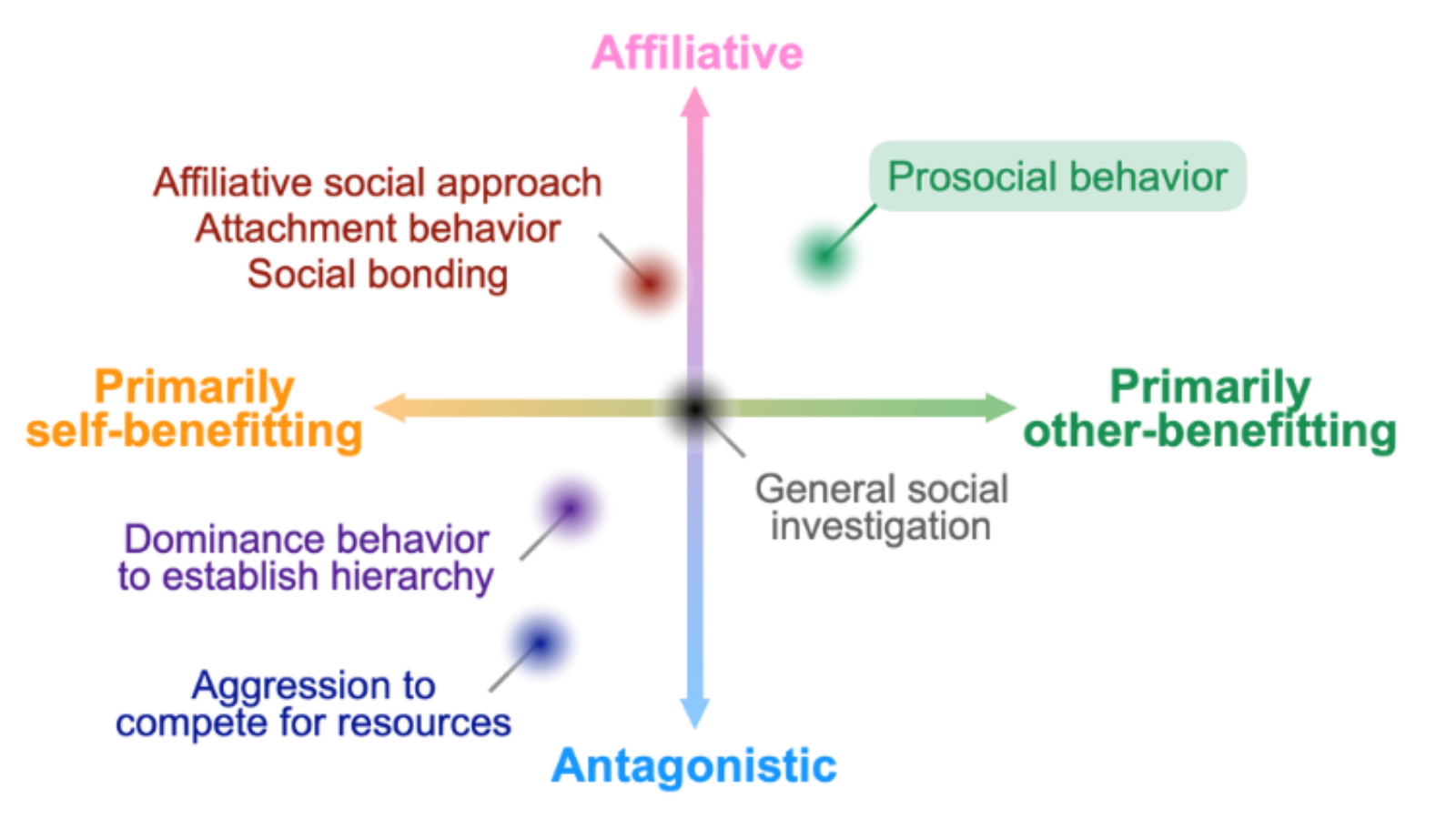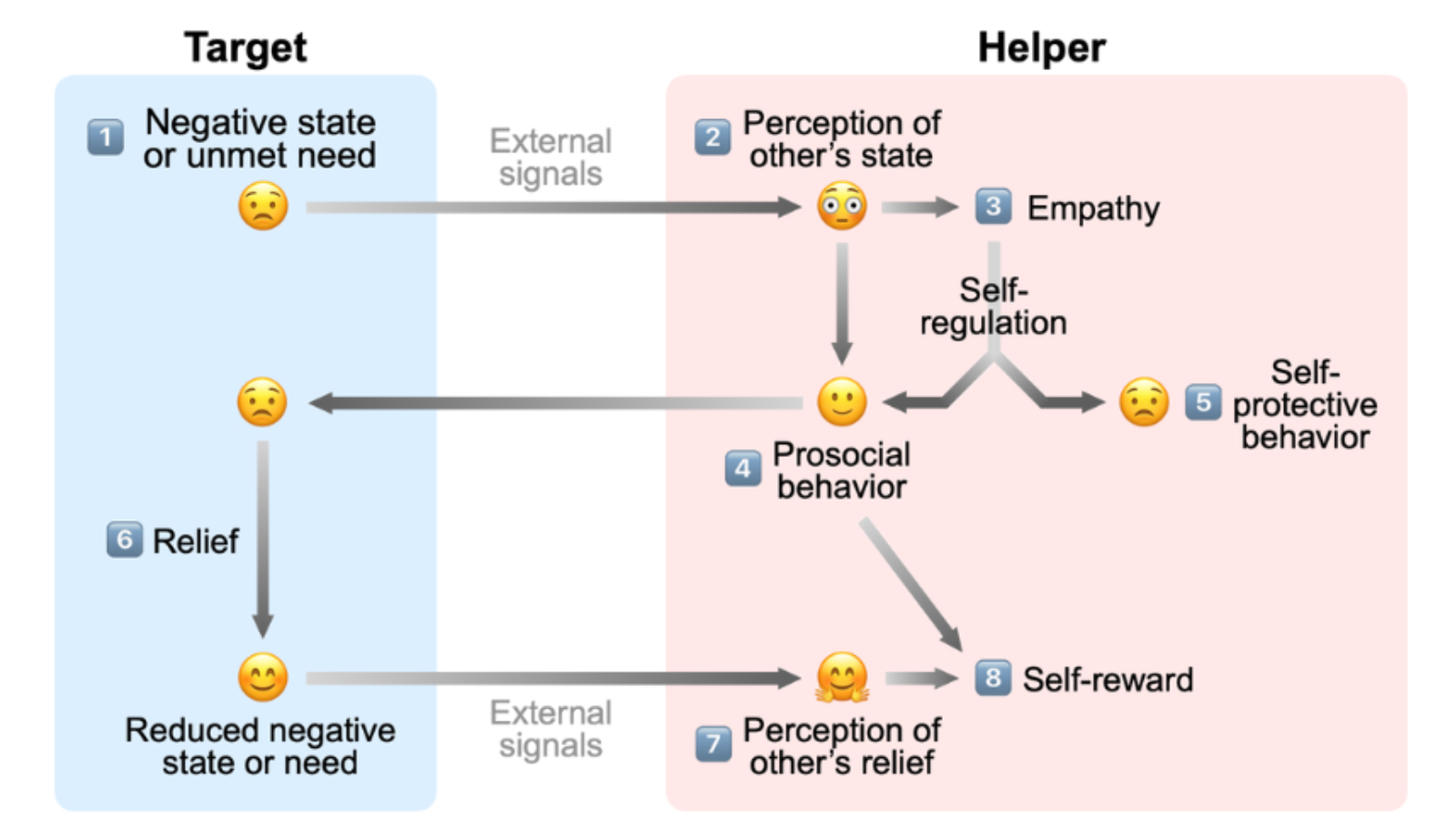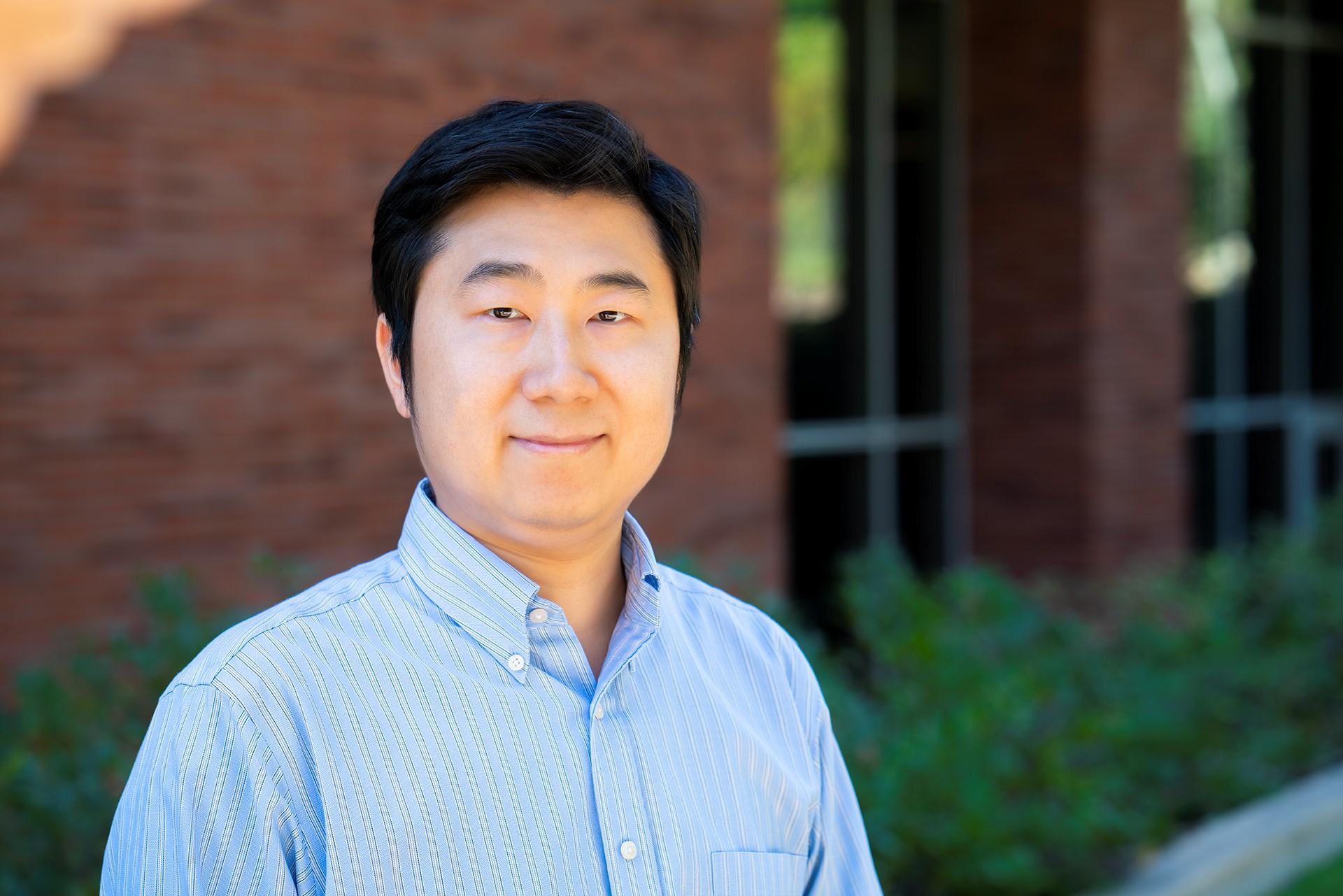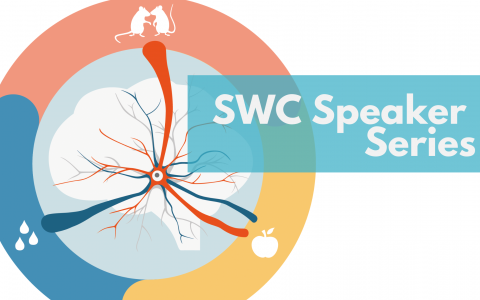
Untangling the neural bases of prosocial behaviour
An interview with Dr Weizhe Hong, UCLA, conducted by Hyewon Kim
In the animal kingdom and concrete jungle alike, we engage in behaviours that benefit not only ourselves but also others around us. Dr Weizhe Hong recently gave a SWC Seminar to discuss his group’s work uncovering the neural mechanisms of prosocial behaviour. How do you go about studying the neural basis of empathy and prosociality and what techniques are needed to understand interbrain dynamics at the cellular level? In this Q&A, he discusses interbrain synchrony, the role of parental status, implications for neurological disorders, and more.
What drew you to study prosocial and empathic behaviours?
I'm drawn to the study of social behaviour due to its inherent complexity. Social interaction is not merely an exchange between two or more individuals, but rather a rich dialogue between their brains. The intricate neural and behavioural processes involved in this dialogue fascinate me, as I find myself intrigued by intricate phenomena.
Historically, researchers have focused on aggression and competitive interactions, while positive, or prosocial, interactions have often been overlooked. There was a prevailing skepticism about whether prosocial behaviours could even be examined in mice, which further deterred in-depth exploration of this domain. Nonetheless, I felt compelled to delve deeper into this under-researched area due to its significance.

My interest is not only personal, but also lies in the societal and clinical importance of prosocial behaviour. It is implicated in numerous psychiatric, neurodevelopmental, and neurological disorders. Even in Alzheimer’s disease, social interaction impairments are as prominent as dementia and cognitive decline. Therefore, studying how prosocial behaviour is regulated in the brain is of utmost importance. A comprehensive understanding of this can pave the way to a better grasp of its impairment in various mental conditions, underscoring the importance of our research in this field.
How much is known about how such behaviours differ between humans and other mammals or species?
While surface-level motor actions and behavioural manifestations differ significantly between species, there is a conceptual commonality.
For instance, animals partake in allogrooming, a behaviour not often shown in human interactions, at least not in the same form as we've observed in mice.
However, at a more abstract level, both animals and humans exhibit empathetic concern for one another. This sense of empathy serves as a key motivator for prosocial behaviour, driving us to act in ways that benefit others. Despite the differences in specific behavioural displays, the fundamental mechanism and purpose of such behaviours could be largely shared across species. Thus, the physical expressions of the behaviour vary, but I believe that we find profound similarities in their underlying principles at a conceptual level.
How did you study the neural circuitry underlying empathy and prosocial behaviours?
We utilised calcium imaging to investigate neuronal activities during prosocial behaviour, focusing specifically on identifying the involved neuron populations. We additionally employed manipulation techniques like optogenetics and chemogenetics, allowing us to modulate the activity in various brain regions and determine whether these neurons are necessary for, or potentially promote, certain behaviours.
To gain a deeper understanding of the cell types and neuronal compositions in distinct brain areas, we implemented various molecular tools. The driving hypothesis was that diverse cellular or neuronal types may be associated with different behaviours. By labeling different neuronal populations with unique molecular markers, we can discern which populations regulate specific behaviours. This approach is invaluable for comprehending the foundation of individual behaviours and identifying which neuron populations might drive prosocial behaviour.
We also rely heavily on computational methods, including machine learning-based tools, to interpret behaviour, given its intricate and subtle phenotypes. Simultaneously, when dealing with large-scale imaging or electrophysiology data, we utilise computational tools to analyse neural data at both the individual cell and population levels.
What brain regions did you focus on and why?
Our research encompasses multiple brain areas, extending from subcortical regions such as the medial amygdala and the medial preoptic area in the hypothalamus, to frontal areas including the medial prefrontal cortex. We have a particular interest in areas that are implicated in social behaviour. Additionally, we can investigate other brain areas that have direct connections with these regions.
In the context of our prosocial behaviour research, we have focused on the medial amygdala, as we discovered that olfactory cues are crucial for the behaviour's manifestation. Given the medial amygdala's role in processing both olfactory and social cues, it emerged as a prime area of focus.
Why did you focus on parental status in prosocial behaviours?
Earlier, I noted that prosocial behaviour aims to benefit others, a concept that might seem counterintuitive considering that most observable behaviours are driven by an animal’s self-interest. A vast majority of behaviors are designed to promote our individual survival and the propagation of our own genes, seemingly leaving little room for actions benefiting others.

One hypothesis posits that prosocial behaviours, such as offering comfort, may have evolutionary roots in parental care for helpless newborn offspring. While parental behaviour is commonly understood to be driven by an animal's reproductive needs, it bears similarity to prosocial behaviour, in that both involve responding to a target in need or distress. This scenario presents a salient stimulus to the observer or bystander that they need to respond with aid – like providing assistance or improving the condition.
Over time, through evolutionary processes, animals might have first developed parenting abilities, eventually repurposing these same neural circuits and mechanisms to address the empathetic concerns of other adult individuals. This adaptation would allow for the emergence of prosocial behaviours. If this holds true, it suggests an intrinsic link between parental and prosocial behaviours—a relationship that we are very interested in studying.
Interbrain synchrony, one of your key findings, is fascinating. What would you say are the mechanisms behind this phenomenon?
We've been exploring the correlation between the brains of two animals engaged in social interaction. In the medial prefrontal cortex, we observed this correlation between brains and identified cells that encode both the animal's own behaviour and its partner's behaviour. We've referred to these as 'self cells' and 'other cells' respectively. We discovered that the removal of these 'self cells' and 'other cells' significantly diminishes the correlation between brains. This suggests that neurons encoding one's own and the partner's behaviours are crucial for the emergence of brain correlation, laying a fundamental groundwork for neural synchrony.
Indeed, during social interactions, animals communicate, thereby exchanging information with each other. This reciprocal exchange at the behavioural level fosters this correlation, reinforcing the intertwined nature of behavioural and neural interactions.
What are the main implications of your research?
Our primary objective is to thoroughly understand the basic brain mechanisms that govern prosocial behaviour, as well as other types of social behaviours. Over the long term, I'm confident that this in-depth understanding of these fundamental processes will enable us to determine how they might become dysfunctional in mental conditions where certain neural processes are disrupted. The insights we gain about neural mechanisms from these studies can potentially shed light on the corresponding processes in pathological conditions.
What’s the next piece of the puzzle your research is going to focus on?
We are still in the early stages of deciphering the mechanisms underlying prosocial behaviour, with the majority of this vast puzzle yet to be solved. This indicates a substantial amount of challenging work ahead of us.
We aim to understand not just prosocial behaviour itself, but also the circumstances prompting an animal to behave prosocially, building upon the results obtained from the assays we've developed previously. We're in the process of developing additional assays to establish various experimental models and paradigms for the study of prosocial behaviour. Additionally, we're planning to broaden our research to include diverse brain areas, with the goal of gaining a more comprehensive understanding of neural mechanisms across multiple regions.
Lastly, we're keen to investigate disease conditions, specifically examining how the neural mechanisms we've discovered might be dysregulated in different mouse models of mental conditions like autism.

About Weizhe Hong
Dr Hong is a Professor of Neurobiology, Biological Chemistry, and Bioengineering at the University of California Los Angeles. His research aims to uncover the fundamental neural mechanisms underlying social behavior, with a specific focus on empathy and prosociality. Dr Hong earned his PhD degree in 2012 from Stanford University and was a Helen Hay Whitney Postdoctoral Fellow at the California Institute of Technology from 2012-2015. In 2016, he joined UCLA as an Assistant Professor, and he was promoted to Associate Professor with tenure in 2020 and to Full Professor in 2023. He is the recipient of many awards, including a Young Investigator Award from the Society for Neuroscience, an Early Career Award from the Society for Social Neuroscience, a Mallinkrodt Scholar Award, a Vallee Scholar Award, a Searle Scholar Award, a Packard Fellowship in Science and Engineering, a McKnight Scholar Award, a Klingenstein-Simons Fellowship, and a Sloan Research Fellowship.
